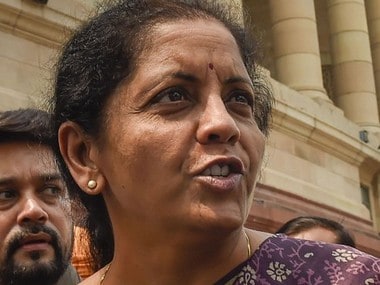An economist and a management theorist walk into a bar. They chat up the bartender, who turns out to be a laid-off automobile worker mixing drinks for a living while waiting for better days. They wonder if Ola and Uber have influenced the slowing sales of automobiles that cost their bartender her job. “There has been a paradigm shift in transport,” the business school guru says. “Yes, but is it statistically significant?” the economist asks. That mythical conversation might be a good starting point for us to discuss the statement from Finance Minister Nirmala Sitharaman that the increasing preference of millennials for ride-sharing services such as Ola and Uber could be behind a slowdown in the sales of cars, and therefore, the automobile sector . Coming in the backdrop of a six-year low in India’s overall GDP growth, that statement is questionable and therefore has understandably spawned social media memes taking a dig at the minister. But there may be more than a kernel of truth in what the minister is saying. What is needed is a sense of detail and proportion to revitalise India’s clearly sagging economy. Let us pause to look at the details on why we need a new kind of economics to bridge the gap between what the management theorist proposes and the professional economist questions at the bar. Pardon the drink puns, but we need to raise the bar of economics because what we have now is a cocktail of opportunities and threats arising from changing situations, shifting lifestyles and disruptive technologies. Between them, they are making the slowdown a mix of cyclical and structural factors. The reason why the minister is the butt of jokes is that Uber and Ola may not be significant enough in terms of current data, but her views are significant in an emerging context in which millennial lifestyles may affect the future. Enough for policy-makers to realise that the cyclical and structural factors need to be considered and addressed separately but in harmony. Automobiles contribute 49 percent of the manufacturing sector in India’s GDP and 7.5 percent directly. The sector is estimated to employ 8 million people directly and 40 million people including those in the ecosystem such as fuel pump attendants. In a nation of 1.25 billion people, agriculture and services between them contribute much more to both jobs and national income as manufacturing accounts for less than 17 percent. [caption id=“attachment_6943221” align=“alignleft” width=“380”]  File image of Nirmala Sitharaman. PTI[/caption] We could always stretch our imagination by using the Keynesian multiplier effect on how one sector affects another, but as of now, cars are not what is driving or slowing growth significantly in the economy. The government cannot overcome its predicament by glib references to Ola and Uber. However, critics of Ms. Sitharaman weaned on the US thumb-rule , “What is good for the country is good for General Motors, and vice-versa,” maybe as off the mark as the minister. There is considerable evidence from microeconomic behaviour and technology-related developments to suggest that the NITI Aayog may do well to come out with a white paper on the automobile sector—and by extension, indeed on the overall economy from a structural point of view. One WhatsApp forward, of questionable veracity but considerable weight, quotes a former auto sector executive to say that the goods and services tax (GST) has made it easier for truckers to increase capacity utilisation. What this means is that more trips by the same trucks reduce the demand for new purchases. The government may pat itself on the back on this, but we need hard evidence. For all we know, there may be a sudden surge in demand when overused trucks are phased out. Millennials may like Ola and Uber not just because they want to avoid EMI payments on car loans, but also because traffic jams are so horrible in Delhi, Bengaluru and Mumbai that you are better off browsing Instagram photos on a backseat than stress yourself out driving. It could also be due to the general expectation that cars and loans are affordable and can be bought anytime. Or that it may be more cool to take public transport than vainly display an overpriced contraption on four-wheels. There is some evidence to suggest that automakers are embracing the new trend. Mahindra & Mahindra recently announced it would invest for a 55 percent stake in ride-hailing firm Meru Cabs. We are also seeing the emergence of Uber and Ola-like sharing services for trucks, such as Lalamove and Porter , which offer on-demand logistics. What all this implies is that we need solid research and forecasting to understand the nature and dimensions of the structural slowdown. Policy measures should logically follow from this if we are not to go for random GST cuts that could hurt fiscal discipline or mechanical interest rate cuts that address cyclical but not structural factors. We are not yet done with emission cut requirements on automakers. But the NITI Aayog is already speaking of a switch to e-mobility by 2030. What is a poor automaker to do if current cash flows are in doubt, and the government slams the triple whammy of a demand crunch, environmental checks based on fossil fuels and a futuristic thrust on electric vehicles? It is the NITI Aayog’s job to help the finance minister understand and sketch out the emerging landscape, instead of setting goals at random. Else the auto industry, and indeed the entire economy, may have the debilitating hangover of a structural slowdown. (The writer is a senior journalist. He tweets as @madversity)
The reason why Nirmala Sitharaman is the butt of jokes is that Uber and Ola may not be significant enough in terms of current data
Advertisement
End of Article


)
)
)
)
)
)
)
)
)



